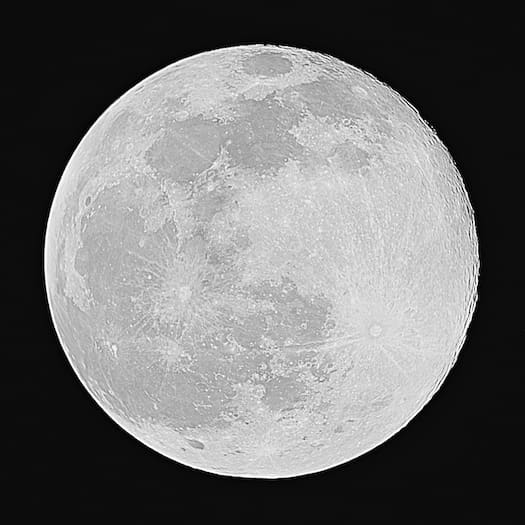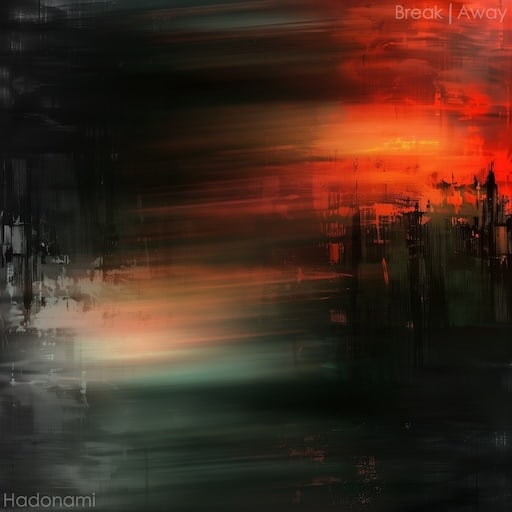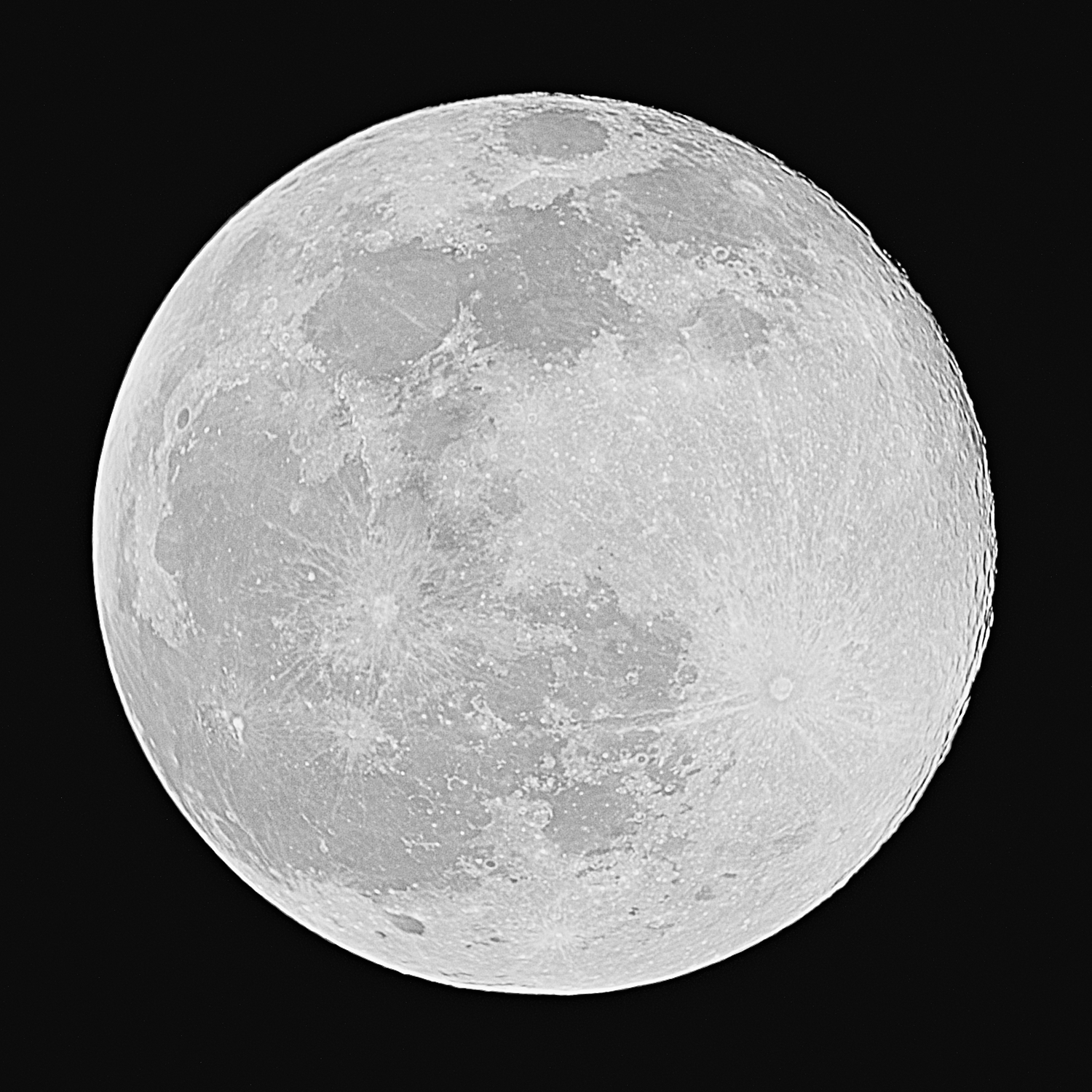
February 16th 2022 Full Moon Image Quality Data
 I shot 67 photos of the full moon on February 16th with my Canon EOS R6. I tried shooting with a few different apertures (shooting in aperture priority mode) and processed all the images with PIPP, AutoStakkert! 3, and RegiStax 6.
I shot 67 photos of the full moon on February 16th with my Canon EOS R6. I tried shooting with a few different apertures (shooting in aperture priority mode) and processed all the images with PIPP, AutoStakkert! 3, and RegiStax 6.
I processed all the images in one batch with PIPP, which allowed me to see PIPP's "quality" rating for all the photos relative to each other. I was curious to see which camera settings resulted in the highest quality rating from PIPP, so I assembled all the photo settings into the table below.
The final product:
The photos listed below were all shot handheld with a Canon EOS R6, Sigma Contemporary 150-600 lens, and the Sigma brand 1.4x teleconverter. Spot focus was used (single, small focus point) for all. The photos were converted to 16-bit TIFF files using darktable 3.8.1 for processing.
The first column is PIPP's "quality" rating that it assigns to each photo. I'm not sure what it's based on or how it compares to AutoStakkert's quality rating system. Someday it would be interesting to compare both quality ratings for a set of photos. Anyway, here's the data, sorted by quality:
| PIPP Quality | Aperture | Shutter Speed | ISO |
|---|---|---|---|
| 100.0% | f/10.0 | 1/400 | 500 |
| 99.87% | f/10.0 | 1/400 | 500 |
| 99.70%. | f/16.0 | 1/500 | 1600 |
| 99.46% | f/16.0 | 1/500 | 1600 |
| 99.41% | f/16.0 | 1/500 | 1600 |
| 98.97% | f/16.0 | 1/500 | 1600 |
| 98.91% | f/16.0 | 1/500 | 1600 |
| 98.52% | f/11.0 | 1/500 | 800 |
| 98.32% | f/16.0 | 1/500 | 1600 |
| 98.25% | f/16.0 | 1/500 | 1600 |
| 98.14% | f/11.0 | 1/500 | 800 |
| 98.14% | f/11.0 | 1/500 | 800 |
| 98.14% | f/11.0 | 1/500 | 800 |
| 97.94% | f/11.0 | 1/500 | 800 |
| 97.75% | f/11.0 | 1/500 | 800 |
| 97.75% | f/16.0 | 1/500 | 1600 |
| 97.65% | f/11.0 | 1/500 | 800 |
| 97.61% | f/16.0 | 1/500 | 1600 |
| 97.61% | f/10.0 | 1/200 | 250 |
| 97.49% | f/11.0 | 1/500 | 800 |
| 97.48% | f/16.0 | 1/640 | 1600 |
| 97.45% | f/16.0 | 1/640 | 1600 |
| 97.43% | f/10.0 | 1/400 | 500 |
| 97.36% | f/16.0 | 1/400 | 1250 |
| 97.22% | f/11.0 | 1/500 | 800 |
| 97.21% | f/11.0 | 1/640 | 800 |
| 97.00% | f/10.0 | 1/200 | 250 |
| 96.97% | f/11.0 | 1/640 | 800 |
| 96.94% | f/11.0 | 1/640 | 800 |
| 96.85% | f/16.0 | 1/640 | 1600 |
| 96.82% | f/16.0 | 1/400 | 1250 |
| 96.65% | f/11.0 | 1/640 | 800 |
| 96.56% | f/10.0 | 1/500 | 500 |
| 96.55% | f/10.0 | 1/500 | 500 |
| 96.41% | f/11.0 | 1/640 | 800 |
| 96.30%. | f/10.0 | 1/500 | 500 |
| 96.22% | f/16.0 | 1/400 | 1250 |
| 96.09% | f/11.0 | 1/640 | 800 |
| 96.05% | f/10.0 | 1/500 | 500 |
| 96.02% | f/10.0 | 1/500 | 500 |
| 95.94% | f/10.0 | 1/200 | 250 |
| 95.93% | f/10.0 | 1/200 | 250 |
| 95.85% | f/11.0 | 1/640 | 800 |
| 95.82% | f/16.0 | 1/500 | 1250 |
| 95.55% | f/10.0 | 1/500 | 500 |
| 95.23% | f/16.0 | 1/500 | 1250 |
| 94.92% | f/10.0 | 1/200 | 250 |
| 93.96% | f/10.0 | 1/200 | 250 |
| 93.66% | f/10.0 | 1/250 | 250 |
| 93.62% | f/10.0 | 1/250 | 250 |
| 93.48% | f/10.0 | 1/200 | 250 |
| 93.48% | f/10.0 | 1/250 | 250 |
| 93.38% | f/10.0 | 1/250 | 250 |
| 93.32% | f/10.0 | 1/250 | 250 |
| 93.24% | f/10.0 | 1/200 | 250 |
| 93.18% | f/10.0 | 1/250 | 250 |
| 93.16% | f/10.0 | 1/250 | 250 |
| 93.08% | f/10.0 | 1/250 | 250 |
| 93.01% | f/10.0 | 1/250 | 250 |
| 92.78% | f/10.0 | 1/250 | 250 |
| 92.65% | f/10.0 | 1/250 | 250 |
| 92.59% | f/10.0 | 1/250 | 250 |
| 92.46% | f/10.0 | 1/250 | 250 |
| 92.17% | f/10.0 | 1/250 | 250 |
| 91.05% | f/10.0 | 1/250 | 250 |
| 91.03% | f/10.0 | 1/250 | 250 |
| 90.24% | f/10.0 | 1/250 | 250 |
As you can see in the data above, the "highest-quality" images (according to PIPP's metric), were generally the smallest-aperture f/16 shots which were also shot at the highest ISOs of 800 or 1600. I presumed that using the f/16 aperture would be the sharpest, but I didn't how how much the higher ISO would degrade image quality. It turns out that the image quality degradation going from ISO 250 to 1600 was more than offset by the increased sharpness from the smaller aperture. This could just be due to the R6's sensor, but it also could just be that because the moon is so bright there's still a good signal-to-noise ratio at ISO 1600.
For my next moon shots, I'll try several apertures on the smaller end and perhaps higher ISOs as well.



